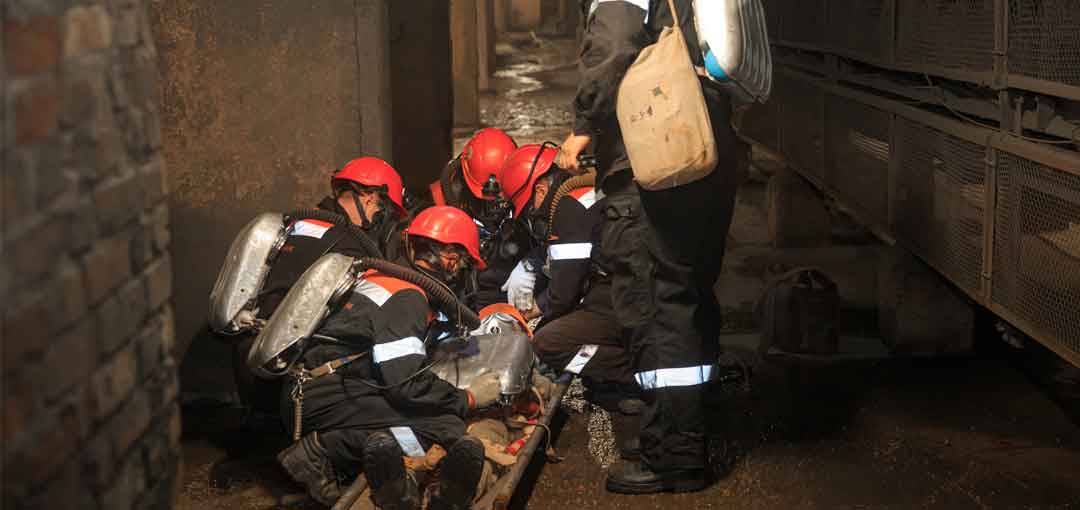What Are Confined Space Rescue Team Responsibilities?
What Are Confined Space Rescue Team Responsibilities?
November 8, 2023 |
In hazardous workplaces, confined spaces pose unique risks that require specialized attention. These environments can be treacherous, with limited entry and exit points, as well as the potential for hazardous substances or atmospheric conditions. To address these dangers, confined space rescue teams play a crucial role. In this article, we will delve into the confined space rescue team responsibilities, highlighting their essential tasks and the importance of their presence in safeguarding lives and ensuring compliance with safety regulations.
Understanding Confined Spaces
Before delving into the responsibilities of confined space rescue teams, it’s essential to grasp the concept of confined spaces themselves. Confined spaces are areas that meet specific criteria, such as limited entry and exit points, and are not intended for continuous occupancy. These spaces can be found in various industries, including manufacturing, construction, and petrochemical, and they often present hidden hazards, making them dangerous to workers.
Risk Assessment And Hazard Identification
The primary responsibility of a confined space rescue team is to conduct a thorough risk assessment and identify potential hazards within the confined space. This task requires a keen eye for detail and a comprehensive understanding of the specific environment in question. Team members must be able to recognize hazards like toxic gases, engulfment risks, or mechanical dangers.
Developing And Implementing Rescue Plans
Once hazards are identified, the rescue team is responsible for developing detailed rescue plans. These plans outline the procedures and equipment necessary to safely extract individuals from the confined space in the event of an emergency. The plans must consider factors like communication methods, retrieval systems, and emergency medical services.
Equipment Inspection And Maintenance
Confined space rescue teams must ensure that all rescue equipment is in proper working order. This includes inspecting and maintaining items such as harnesses, winches, lifelines, and gas detectors. Regular equipment checks are essential to guarantee that everything functions reliably when needed most.
Training And Drills
One of the most critical responsibilities of a confined space rescue team is to provide comprehensive confined space training to team members and other employees who may enter confined spaces. Regular drills and exercises are conducted to familiarize individuals with rescue procedures and enhance response times in emergencies.
Monitoring Atmospheric Conditions
The atmosphere within confined spaces can be deadly due to toxic gases, low oxygen levels, or other harmful elements. Rescue teams are tasked with continuously monitoring and testing the atmospheric conditions within these spaces to ensure they remain safe for workers. They use gas detectors and other specialized equipment for this purpose.
Communication And Coordination
Effective communication is vital during confined space operations. Rescue teams are responsible for establishing clear communication protocols, both within the team and with workers inside the confined space. This ensures that everyone involved is aware of the situation and can act swiftly in emergencies.
On-Site Presence During Confined Space Entry
One of the most critical responsibilities of a confined space rescue team is their physical presence during confined space entry operations. They stand by, ready to respond if an emergency arises. This on-site presence provides a sense of security to workers inside the confined space and allows for immediate action in case of trouble.
Emergency Response
When an emergency occurs inside a confined space, the rescue team must respond promptly and effectively. This includes using their knowledge, training, and specialized equipment to extract individuals safely. Time is of the essence in confined space emergencies, and the rescue team’s quick response can mean the difference between life and death.
Compliance With Regulations
Compliance with safety regulations is non-negotiable in confined space operations. Rescue teams are responsible for ensuring that all activities in confined spaces adhere to relevant safety standards and guidelines. This includes maintaining documentation of training, inspections, and incident reports.
The Importance Of Confined Space Rescue Teams
Confined space rescue teams are indispensable in workplaces where confined spaces are a common feature. Their responsibilities go beyond simply responding to emergencies; they actively work to prevent incidents through risk assessment, training, and equipment maintenance. Here’s why their role is so vital:
Saving Lives
The primary purpose of confined space rescue teams is to save lives. In emergencies, every second counts, and their swift response can mean the difference between a successful rescue and a tragedy. Their training and preparedness are critical for ensuring the safety of workers.
Preventing Accidents
Through thorough risk assessment and hazard identification, rescue teams contribute to accident prevention. Their proactive approach helps identify potential dangers before they escalate into emergencies, reducing the overall risk within confined spaces.
Ensuring Compliance
Confined space rescue teams play a pivotal role in ensuring that workplaces comply with safety regulations. Their diligence in adhering to standards and guidelines helps companies avoid legal issues and fosters a culture of safety.
Peace Of Mind
The presence of a well-trained rescue team provides peace of mind to workers entering confined spaces. Knowing that a team of professionals is standing by to respond in case of an emergency can alleviate anxiety and boost confidence among employees.
Continuous Improvement
By conducting post-incident evaluations and making necessary improvements, rescue teams contribute to continuous improvement in safety procedures. This proactive approach helps organizations learn from past incidents and refine their practices.
Confined space rescue teams bear significant responsibilities in safeguarding lives and ensuring the safety of workers in hazardous environments. Their duties encompass risk assessment, rescue planning, equipment maintenance, training, and emergency response. Their presence and expertise are essential for preventing accidents and responding effectively when emergencies occur. In workplaces where confined spaces are prevalent, the role of these teams cannot be overstated, as they are the unsung heroes who ensure that everyone goes home safely at the end of the day.
